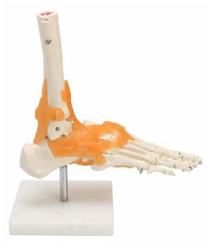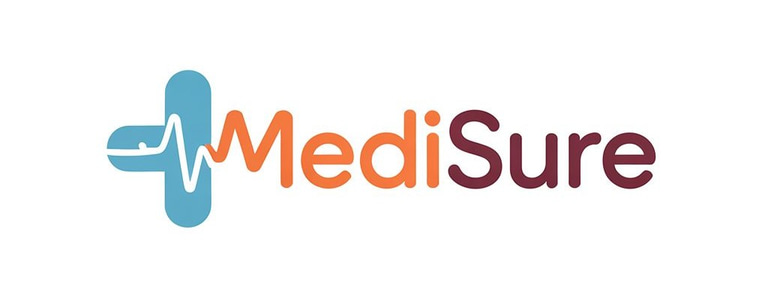رَبِّ زِدْنِي عِلْماً

Functional Ankle Joint
Bone And Joint
₹82.00₹22.00
The functional ankle joint is a crucial anatomical structure that plays a vital role in mobility, stability, and overall lower limb function. Often overlooked, the ankle joint comprises several components that work together to facilitate movement and absorb shock during activities such as walking, running, and jumping. This exploration provides an in-depth understanding of the anatomy, mechanics, and importance of the functional ankle joint. ### Anatomy of the Ankle Joint The ankle joint, clinically referred to as the talocrural joint, is primarily formed by three bones: the tibia, fibula, and talus. The tibia and fibula are the two long bones in the lower leg, while the talus is a small bone that sits above the heel bone (calcaneus) and connects with the lower leg bones at the ankle. 1. **Tibia**: The larger of the two lower leg bones, the tibia supports much of the body's weight and is essential for walking. It has a rounded end that forms the medial malleolus, the bony prominence on the inner side of the ankle. 2. **Fibula**: The fibula is thinner and serves as a support structure, contributing to the lateral stability of the ankle. Its end, the lateral malleolus, is the outer ankle bone, providing stability and protection for the ankle joint. 3. **Talus**: The talus connects the ankle and the foot. It forms a critical joint with the tibia and fibula and allows for various movements of the foot. In addition to these bones, several ligaments surround the ankle joint, providing stability and support by connecting bones to other bones. The key ligaments include the lateral ligaments (comprised of the anterior talofibular, calcaneofibular, and posterior talofibular ligaments) and the deltoid ligament, which provides medial stability. ### Functionality of the Ankle Joint The functional aspects of the ankle joint are categorized primarily into two types of movements: dorsiflexion and plantarflexion. - **Dorsiflexion**: This movement involves raising the foot upwards towards the shin, allowing for activities such as walking and climbing stairs. Dorsiflexion is critical in maintaining proper gait and preventing tripping. - **Plantarflexion**: This is the opposite action, where the foot points downwards, which is vital for pushing off the ground when running or jumping. Both movements work in concert to provide balance and mobility. ### Importance of the Ankle Joint The functional ankle joint is integral to everyday activities and athletic performance. Proper function of this joint ensures that an individual can walk, run, jump, and engage in various sports and physical activities without pain or limitation. Here are a few reasons why the ankle joint is essential: 1. **Mobility**: The ankle joint allows for a wide range of motion, ensuring activities like walking are smooth and efficient. It acts as a pivot point between the leg and foot, enabling directional changes without losing balance. 2. **Stability**: It helps maintain balance while standing and moving. The ligaments surrounding the joint provide necessary support to withstand various movements, preventing injuries such as sprains that can occur due to instability. 3. **Shock Absorption**: During activities such as running, the ankle joint plays a critical role in absorbing impact. This function mitigates stress on the knees and hips, reducing the risk of injury to these joints. 4. **Proprioception**: The ankle is equipped with sensory receptors that send information to the brain regarding body position and movement. This feedback is essential for balance and coordination, ensuring that the body reacts appropriately to surface changes and environmental conditions. ### Common Ankle Issues Despite its robustness, the ankle joint is susceptible to various injuries and conditions, particularly among athletes. Some common issues include: - **Ankle Sprains**: Occurring when ligaments are stretched beyond their limits, ankle sprains are one of the most prevalent injuries affecting this joint. Symptoms include pain, swelling, and bruising, often resulting from twisting motions or sudden turns. - **Fractures**: The bones forming the ankle can break from high-impact incidents, such as falls or sports injuries. Ankle fractures can limit mobility and often require medical intervention. - **Achilles Tendonitis**: This condition results from inflammation of the Achilles tendon, which connects the calf muscles to the heel bone. It can arise from repetitive strain or overuse, leading to pain during movement. - **Tendinopathy**: Other tendons in the ankle may also become irritated or damaged due to overuse, resulting in chronic pain or dysfunction. ### Enhancing Ankle Functionality To promote optimal ankle joint function and mitigate the risk of injury, several strategies are recommended: 1. **Strength Training**: Engaging in exercises that strengthen the muscles surrounding the ankle can enhance stability. This may include calf raises, ankle flexion, and resistance band exercises. 2. **Flexibility Exercises**: Stretching the ankle joint and surrounding muscles improves range of motion and reduces the likelihood of strains or sprains. Incorporating dynamic stretching before activity and static stretching post-activity can be beneficial. 3. **Balance Training**: Activities such as yoga or using balance boards can enhance proprioception and stability, fostering a strong sense of body awareness. 4. **Footwear and Orthotics**: Wearing the appropriate shoes that provide arch support and stability can significantly reduce injury risk. Custom orthotics may also help correct any structural imbalances affecting the ankle. ### Conclusion The functional ankle joint is a marvel of human anatomy, enabling complex movements essential for daily living and athletic pursuits. By understanding its structure and function, we can appreciate its importance and take proactive measures to maintain its health. Ensuring the ankle joint remains strong and functional is a lifelong endeavor, one that pays dividends in mobility and quality of life.
Training
Providing essential healthcare training and simulation solutions.
COntacts
Support
info@medisureinternational.com
+91 9972123423
© Medisure. All Rights Are Reserved
Crafted with ❤️by Influence Kashmir
